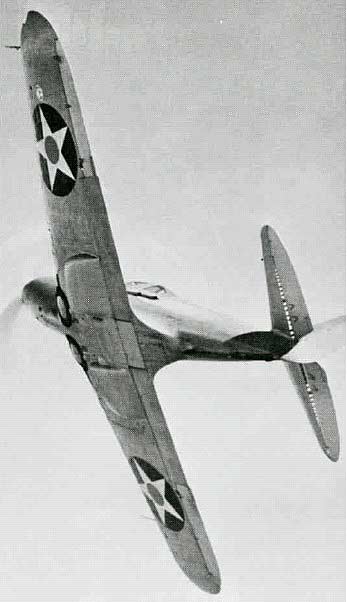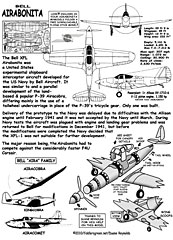


Bell-XFL-Airabonita - $$5.95
The Bell XFL Airabonita was a US experimental shipboard interceptor developed for the US Navy in 1939. It was similar to and a parallel development of the land-based P-39 Airacobra, differing mainly in the use of a tailwheel undercarriage in place of the P-39's tricycle gear. Only one prototype was manufactured having lost out to the Vought Corsair.
Bell XFL-1 Airabonita Experimental Carrier Fighter
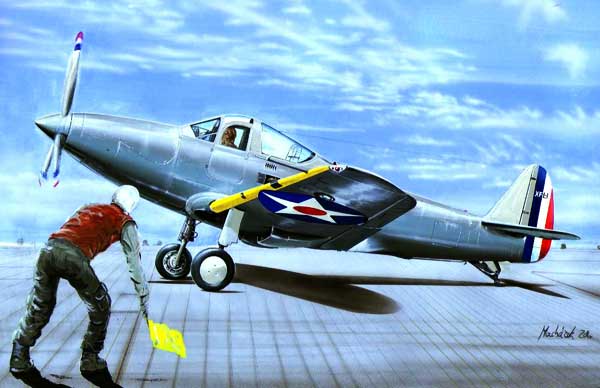
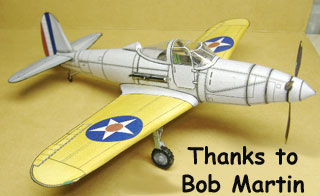
The Bell XFL-1 Airabonita was a US experimental shipboard interceptor developed for the US Navy in 1939. It was similar to and a parallel development of the land-based P-39 Airacobra, differing mainly in the use of a tailwheel undercarriage in place of the P-39's tricycle gear.
I ran across your site purely by accident while doing some research on the aircraft designer Robert J. Woods. The Airabonita was one of his designs, as well as many other aircraft built by Bell, including the YFM-1, the Airacobra, the P-59, and the X-5. He got his start at Detroit Aircraft Corporation, where he worked on the DL-1 and DL-2 versions of the Sirius and Altair, respectively, which had metal fuselages instead of the laminated plywood used by Lockheed. While there, he began work on a fighter derivative of the Altair, the XP-900, better known as the YP-24. After Detroit Aircraft folded up, he moved on to Consolidated and continued his work, with the final result going into production as the Consolidated P-30A, also known as the PB-2A.... Although my own interest is in 1:16 scale balsa wood models, I find your paper models and the associated information on your website both intriguing and informative. I have long wanted to build the Lockheed Sirius and Vega that I have seen displayed at NASM, and now have enough data to start drawing up some preliminary plans. With regard to the P-30, not only is it a very important, if underappreciated, fighter aircraft, but it has unusually sleek lines and an attractive color scheme. I think that it would make a terrific paper model! I would suggest some of Sydney Camm's classic designs for Hawker as well, especially the Hart and Fury....You have a fantastic website... Best regards...Ron Easley
Bell-Airabonita-XFL-1

The Airabonita was another attempt to modify an Air Corps fighter into a carrier plane. It was patterned after Bell's XP-39 Airacobra which had flown on April 6, 1938, and had reached 390 mph during tests. Air Corps trials were encouraging, so Bell offered a suitably altered version of the fighter to the Navy. On November 8, 1938, an agreement was signed identifying the Bell proposal as the XFL-1, recalling the unused Loening designation code.
The Airabonita, as Bell called the XFL-1, displayed some rather novel features for a carrier plane which were viewed with concern by its pilots. A liquid-cooled Allison XV-1710-16, twelve cylinder inline engine was a deviation from the standard air-cooled types in the first place. But Bell engineers had installed this power unit in the middle of the airplane, driving the nose-mounted propeller by means of an extension shaft passing between the pilot's feet.
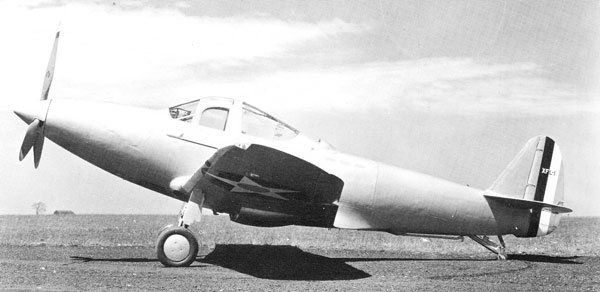
From a design point of view, this location places the heavy engine right on the center of gravity, an ideal position for good maneuverability. The drive shaft was 8 feet long and connected with a reduction gear which turned the propeller. During operations, the long shaft vibrated and gave rise to fear that it would either break loose and flail the pilot or lead to the premature fatiguing of the aircraft.
Another feature that was met with some apprehension was the design of the cockpit with its automobile-type doors. Indeed, if it became necessary to ditch the XFL-1, it would be very difficult to push the doors outward against the water Pressure. In its favor, however, was the proposed armament of two .30 cal. machine guns in the nose and a .50 cal. machine gun or a 37 mm cannon firing through the hollow propeller shaft.
The Airabonita was first flown on May 13, 1940, with a conventional tailwheel landing gear instead of the tricycle arrangement on the P-39. For a better view of the carrier deck during approaches, the XFL-1 cockpit was slightly higher than that of the Airacobra; and a clear-view panel was installed between the pilot's feet. It arrived at Anacostia on February 27, 1941, for its service trials.
The 1,150 hp Allison supplied enough power to pull the XFL-1 to a speed of 336 mph at 10,000 feet-substantially slower than the P-39. In addition to the vibration, the Airabonita suffered from longitudinal instability. A wind tunnel analysis of the design was undertaken using a scale model. It was found to be necessary to increase the vertical stabilizer area.
Although the XFL- 1 had been strengthened to withstand the rigors of carrier service, the plane was beset with landing gear failures and was unable to pass its carrier qualification trials. At this point, it became apparent that the Bell fighter was simply not suited for carrier service, and was summarily rejected.
The XFL-1 was not a converted P-39. In
addition to the differences previously noted,
it had a larger wing, spanning 35 feet with
an area of 232 square feet. It was 29 feet 9
inches long and 12 feet 9 inches high. Empty
weight was 5,161 pounds, maximum weight
was 7,212 pounds. Fuel capacity was 126
gallons which gave a range of 965 miles.
Service ceiling was 30,900 feet with an initial climb rate of 2,630 fp. No armament
was installed in the Airabonita prototype.
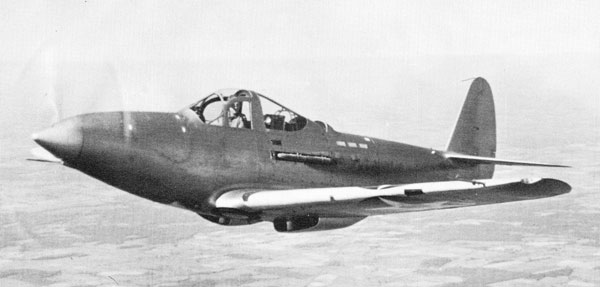
The XFL-1 Airabonita was an experimental shipboard version of the land-based P-39 Airacobra which was developed in parallel with the Army version. However, the Airabonita had the misfortune to be in direct competition with the Vought Corsair for Navy orders, and only one example was built.
In February 1938, the US Navy had issued a specification for a high-speed, high-altitude fighter. Bell submitted a navalized version of the Airacobra in response to this request. At the same time, Chance Vought submitted a design which was eventually to emerge as the superlative F4U Corsair. A US Navy contract for one XFL-1 prototype was placed on November 8, 1938.
The Airabonita was powered by a 1150 hp Allison XV-1710-6, the first in-line engine to be fitted to an American naval fighter since 1928. The use of a liquid-cooled engine in itself was quite a gamble for Bell, since in 1927 the Navy had explicitly excluded liquid-cooled engines from aircraft carriers, fearful of storing the flammable glycol coolant aboard ship. (There seems to be some doubt about the veracity of this fact)
An arrestor hook was added under the base of the empennage. The Airabonita still retained the automobile-style doors for entry and exit.
The XFL-1 Airabonita differed from its land-based counterpart primarily in having underwing radiators and a tail wheel undercarriage. The main undercarriage members were transferred to the front wing spar, and an arrester hook was fitted. The relocation of the main undercarriage members to the forward part of the wing necessitated the relocation of the wing-root radiators to exterior points under the rear of the central section of the wing. The fuselage was shorter than that of the P-39, the vertical tail surfaces were redesigned, and the airframe was stressed for carrier operations. The canopy was of a higher profile than that of the P-39, and the pilot sat higher in the cockpit. The wing was of larger span with greater chord. The dorsal intake was smaller and shallower than that on the YP-39. Armament was to have been two 0.30-inch machine guns in the fuselage nose, plus a 0.50-inch machine gun or a 37-mm cannon firing through the propeller hub, although no armament was actually ever fitted to the XFL-1 prototype.
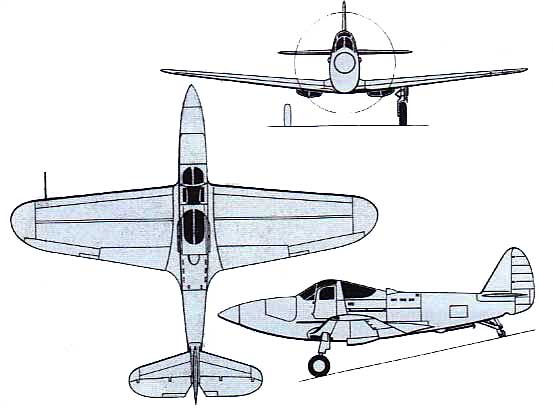 Design and development:
Design and development:
The XFL-1 (Bell Model 5) was powered by a single Allison XV-1710-6 piston engine installed amidships behind the pilot and driving a three bladed Curtiss propeller in the nose through a 10.38 ft extension shaft. The aircraft had provisions for a single 37 mm (1.46 in) Oldsmobile T9 cannon which could be replaced by a .50 in Browning M2/AN machine gun through the propeller shaft and two .30 in machine guns in the fuselage nose. It first flew on 13 May 1940.
Although based on the P-39 Airacobra the XFL-1 utilized a conventional tail-wheel undercarriage and the coolant radiators were housed externally in fairings under the wings instead of within the wing center-section. The Allison engine was the first of its type to be tried out by the Navy and lacked the turbo charger fitted to the XP-39.
Delivery of the prototype to the Navy was delayed due to difficulties with the Allison engine until February 1941 and it was not accepted as Navy property until March. During Navy tests the aircraft was plagued with engine and landing gear problems and was returned to Bell for modifications in December 1941, but before the modifications were completed the Navy decided that the XFL-1 was not suitable for further development.
As a possible further reason for the rejection it is often stated that the Navy's position during that era was that all its aircraft should use air-cooled 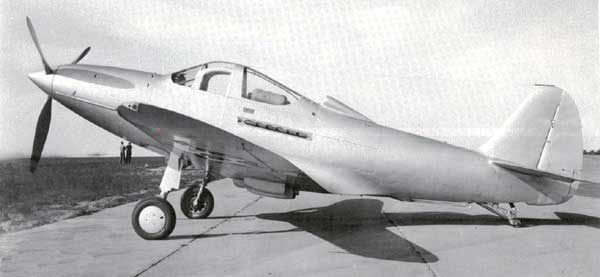 engines (while the Allison was liquid-cooled). This appears unfounded speculation. The Navy in fact "would consider a liquid-cooled engine installation provided a material increase in performance over air-cooled engine can be shown".
engines (while the Allison was liquid-cooled). This appears unfounded speculation. The Navy in fact "would consider a liquid-cooled engine installation provided a material increase in performance over air-cooled engine can be shown".
In addition the Allison engine had only a single-speed supercharger, so its altitude performance was much inferior to other Navy fighters of the period like the F4F Wildcat (the Army's P-39 and P-40, which used the same engine, had the same difficulty; the P-38 used the same engines but incorporated exhaust-driven superchargers to achieve good altitude performance).
Lastly, the Airabonita had to compete against the considerably faster F4U Corsair, the first US Navy fighter to exceed 400 mph in level flight. The XFL-1 was later used for non-flying armament tests, and later destroyed. For many years its remains were visible at the dump at Naval Air Station Patuxent River, Maryland.
Be sure to check out the Bell Airacobra HERE and the Bell Airacomet HERE
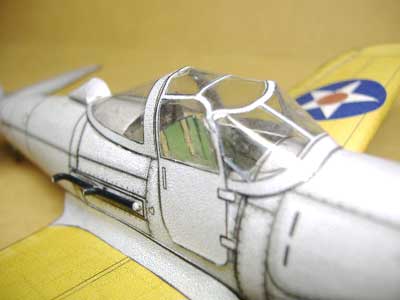 |
Clear Cabin Bell XFL-1 Airabonita submitted by Bob Martin. Thanks Bob! |
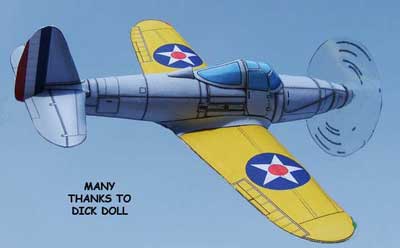
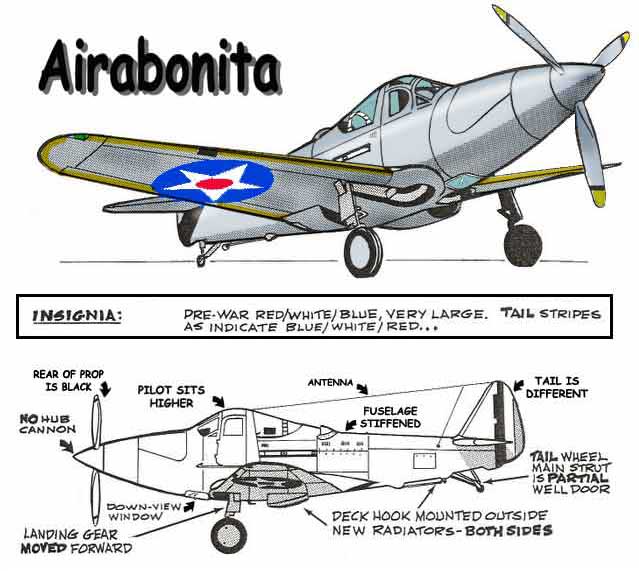 |
| These are a few fun facts about the Bell XFL Airabonita. |
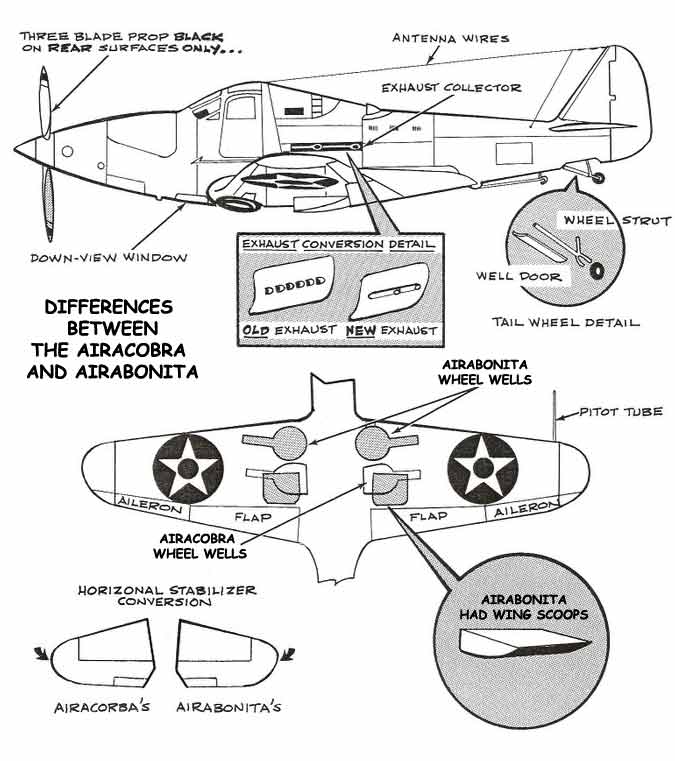 |
Although based on the P-39 Airacobra the XFL-1 utilized a conventional tail-wheel undercarriage and the coolant radiators were housed externally in fairings under the wings instead of within the wing center-section. The Allison engine was the first of its type to be tried out by the Navy and lacked the turbo charger fitted to the P-39 Airacobra. Delivery of the prototype to the Navy was delayed due to difficulties with the Allison engine until February 1941 and it was not accepted as Navy property until March. During Navy tests the aircraft was plagued with engine and landing gear problems and was returned to Bell for modifications in December 1941, but before the modifications were completed the Navy decided that the XFL-1 was not suitable for further development. |
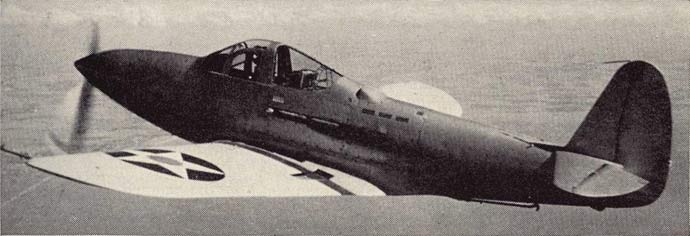 The Bell XFL Airabonita was small compaired to other fighters of it's time |
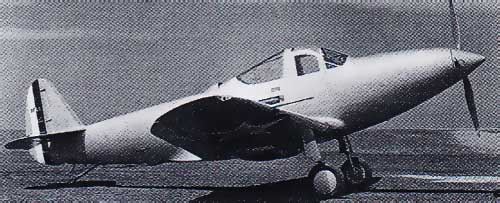 From the side, the Bell Airbonita seemed to be anxious to get up in the air |
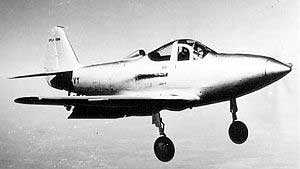 Here's the Bell Airabonita with it's flaps down positioning for a landing |
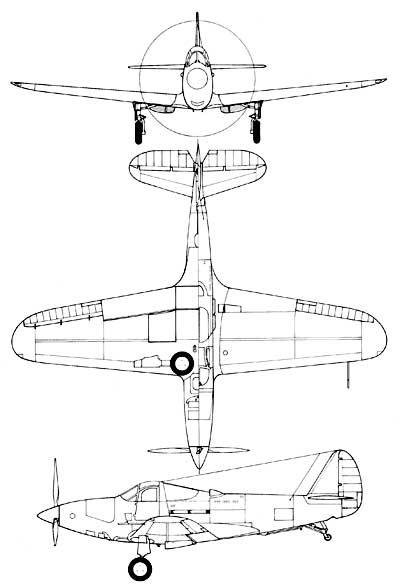 |
Length: 29 ft 9 in |
The Bell XFL-1 Airabonita was an experimental shipboard interceptor developed for the U.S. Navy in 1939, essentially a naval variant of the land-based P-39 Airacobra with modifications like a tailwheel undercarriage and arresting hook. Making its first flight in May 1940, it competed in trials but ultimately failed to enter production due to performance issues. This obscure yet fascinating prototype embodies the rapid evolution of WWII-era carrier aviation. Our paper model highlights its sleek lines and unique features, offering modelers a chance to explore a "what-if" chapter of military aircraft history through precise, easy-to-follow assembly.
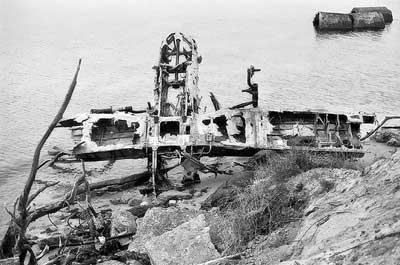 |
Remains of a Bell XFL -1 Airabonita on a beach along the Patuxent River, Maryland. July, 1976 |



